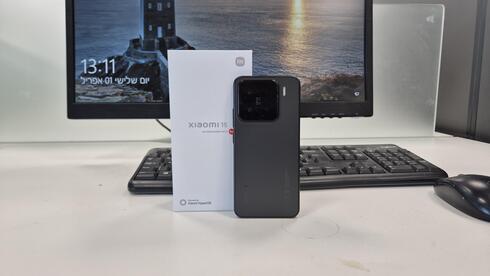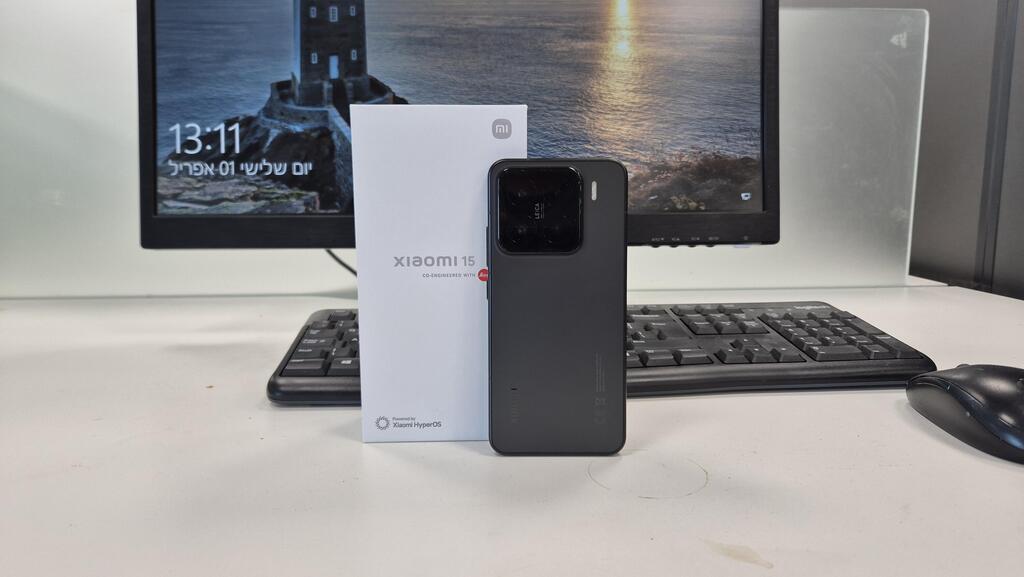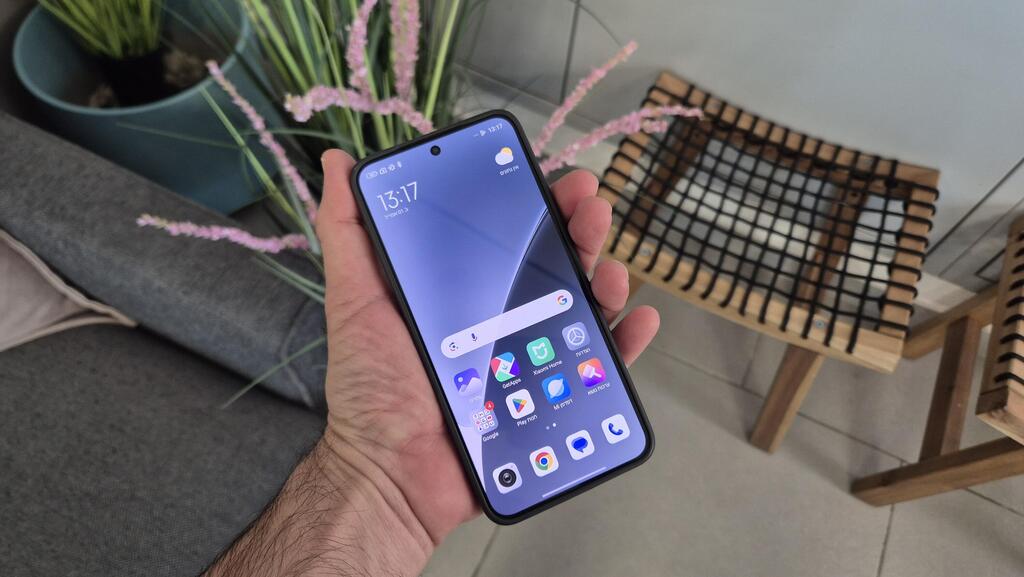
Smartphone review
Xiaomi 15 takes on the iPhone and Galaxy S25
With impressive specs and build quality, Xiaomi’s latest flagship is ready to challenge the top-tier brands—but does it offer enough innovation?
Top Line:
The Xiaomi 15 is a flagship device that is solid and reliable but lacks significant innovation. It performs excellently, though it is not alone in this regard—Samsung's S25 series and the iPhone 16 also did not offer particularly groundbreaking innovations. The comparison between them is fair, despite the Xiaomi brand being considered "secondary." In terms of performance, build quality, and features, this device can certainly compete with both the Galaxy and the iPhone.
The price, however, is somewhat problematic, sitting around $1,000. For this price, you could arguably buy an iPhone or a Samsung, so why "settle" for Xiaomi? But when comparing specifications, you would need to add another $300 to the cost of an iPhone with the same storage capacity. The Galaxy S25 is priced $130 higher than the Xiaomi. In fact, its price is similar to that of the OnePlus 13, which offers comparable specifications.
There are other serious competitors, notably Xiaomi's mid-range devices (e.g., from the Poco brand), which offer a similar package at about half the price.
Details:
Xiaomi’s mid-range and budget smartphones often raise the question: Why spend more on their high-end devices? The Chinese manufacturer offers models around $500 that leave a good impression. However, Xiaomi also has flagship devices that compete directly with top models from other manufacturers, offering similar or identical specifications at comparable prices. The Xiaomi 15, which recently launched, is one such device. There's also an Ultra version, but no Pro, Plus, or Note variants.
We took the new device for a test run, courtesy of Hamilton, Xiaomi's official importer. So, does the company have anything new to offer in the battle against pricier models?
Build and Design: Standard in a Good Way
The Xiaomi 15 is not particularly large, with dimensions similar to the Galaxy S25 and iPhone 16 in their basic versions (not the Plus or Pro variants). It’s a bit heavier, weighing around 190 grams, and feels even heavier. The screen measures 6.36 inches.
It might sound odd to say a smartphone feels solid, but the Xiaomi 15 feels like a single, tightly-knit unit with excellent build quality. While this isn’t unusual, some devices do feel less cohesive, with plastic integration or parts that seem prone to coming apart. That’s not the case here.
The front is completely flat (in contrast to last year’s more advanced model, which had a slightly curved screen), and it features a standard layout: a power button on the right side, with volume keys above it, and a minimal selfie camera on the screen. The camera lenses protrude slightly from the back of the device, positioned in the upper-left corner and contributing significantly to its weight.
This year, Xiaomi uses its own Xiaomi Shield Glass rather than Corning’s Gorilla Glass, a common choice among smartphones. In regular use, the difference is not noticeable, and the device meets the IP68 standard for dust and water resistance, meaning it can be submerged for up to 30 minutes at a depth of up to 1.5 meters. As usual, Xiaomi includes a good silicone case for added protection.
Hardware: Powerful, with Generous Specifications
The specifications are on par with other flagship Android devices, including a Snapdragon 8 Elite processor, 12 GB of RAM (with an additional 6 GB available from storage by default), and 512 GB of storage. For example, Xiaomi’s Poco X7 Pro features a different processor but the same RAM and storage at a more attractive price.
These specifications result in a fast device that handles regular use without issues and can run heavy games without overheating. The screen is excellent, with a peak brightness of 3,200 nits, ensuring good visibility even in direct sunlight, except for some reflections at certain angles.
The Xiaomi 15 also supports eSIM, which was not available on the previous model. The battery has increased slightly to 5,240 mAh, but this change is not noticeable in practice. The device lasts a full day or a day and a half on a single charge, and the included 90-watt charger supports fast charging.
Software: Plenty of AI Features, but They're a Bit Hidden
The Xiaomi 15 runs Android 15 with Xiaomi’s HyperOS 2 interface. During setup, you can choose the display style, with the default showing apps on the home screen instead of an app drawer. Another default is using gesture navigation instead of buttons for back, home, and recent apps. These settings can be easily changed at any time in the settings menu.
After installation, you’ll find the usual suite of Google apps, including Gemini, which can be accessed with a long press of the power button. Xiaomi apps (including a universal remote app) and third-party apps like LinkedIn, Netflix, Spotify, Facebook, and Booking.com are also pre-installed. While this can be somewhat annoying, Xiaomi has avoided inundating the device with game installation recommendations.
Gemini isn't the only AI feature on the device. In the settings menu, there is a section called Xiaomi HyperAI, where you can access various AI capabilities. This includes a tool that helps write messages in different styles, proofreading, automatic subtitles, transcription of recordings, natural language search within phone menus, dynamic wallpapers, and more.
As usual, some features are not available in Hebrew, like recording transcription (which works in English and other languages). Unlike most competitors, Xiaomi displays the transcription in real-time as you record the audio, instead of after finishing the recording.
The AI tool for enhancing, upgrading, and proofreading text works in Hebrew, but it took some effort to find the feature on Xiaomi’s keyboard. The tool can even expand short text into longer, more detailed paragraphs.
Camera: Does an Excellent Job
The camera lenses are prominently placed on the back and contribute significantly to the device’s weight. These lenses benefit from Xiaomi’s ongoing collaboration with Leica, a respected camera and lens manufacturer.
Xiaomi has not participated in the pixel race; the device comes with three 50-megapixel cameras (plus a 32-megapixel selfie camera). These cameras take excellent photos, both in daylight and at night.
The device offers several filters, including some unique Leica options (e.g., sepia, natural, and more vibrant photography). Before applying the filters, you can choose between an authentic Leica mode or a more vivid mode. There is a permanent shortcut in the camera app to toggle between these modes.
AI features also enhance the camera experience, such as removing details or people from images, improving image sharpness, removing reflections, and even expanding photos by adding backgrounds. The quality of these features depends on the original photo, and while the results are not always perfect, they are generally effective.














